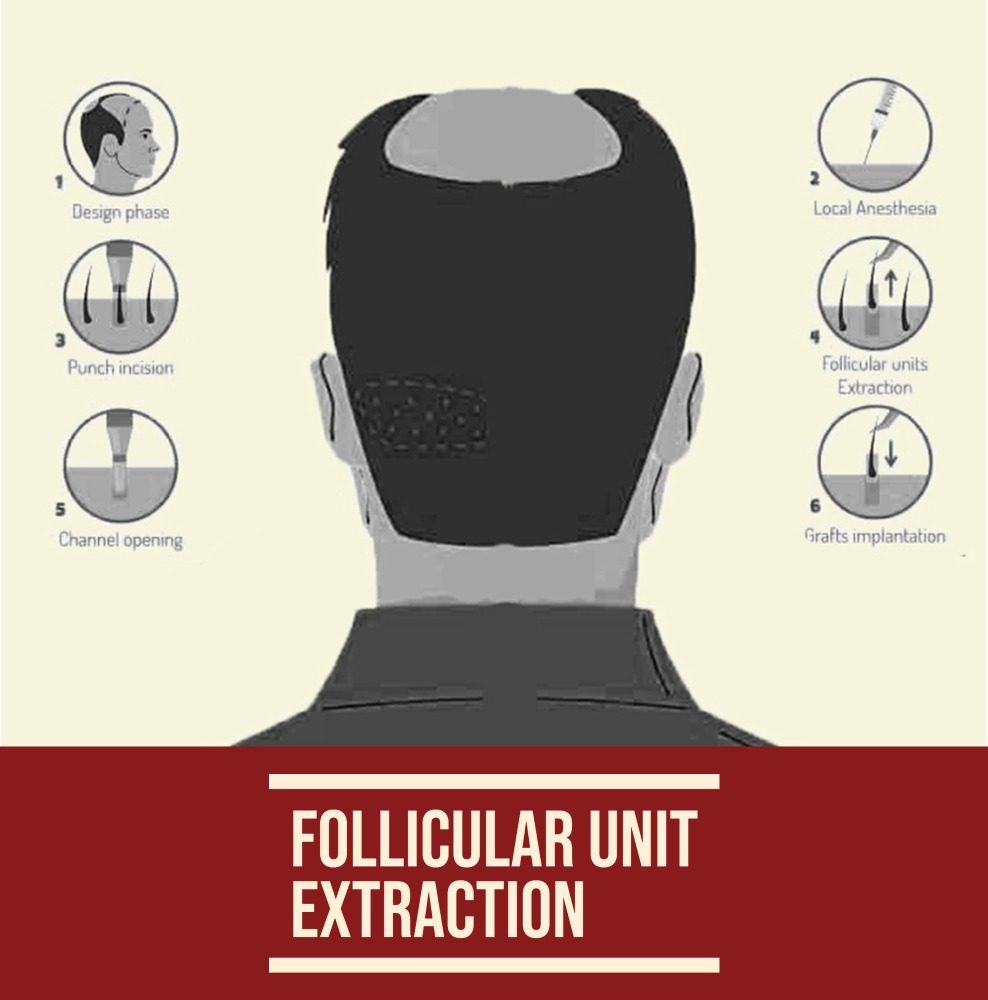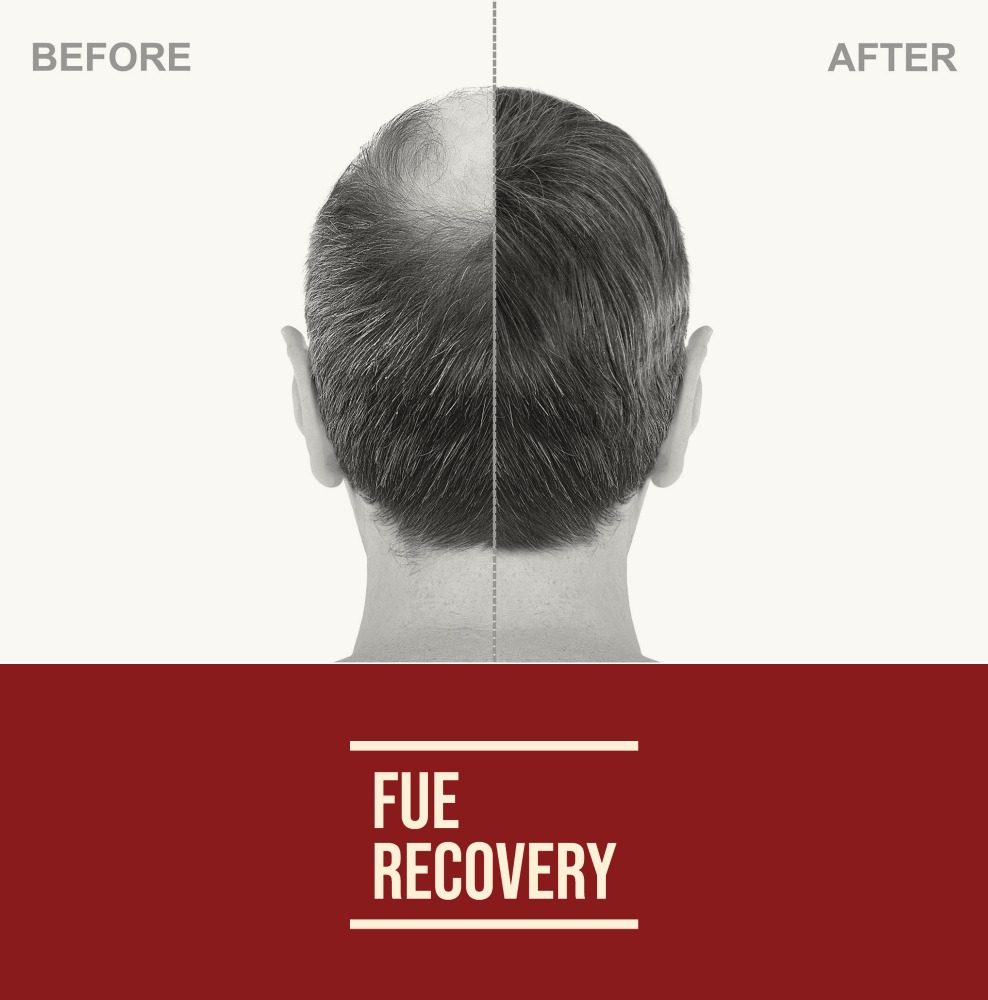Follicular Unit extraction was an older name for the current term of FUE ( Follicular Unit Excision ). It is an additional surgical procedure other than the FUT. It is an intricate surgical procedure to restore the bald area affected by hair loss. The most significant advantage of FUE over FUT is that it leaves multiple microscopic scars that are hardly visible even with a short hairstyle. This makes it one of the forms of popular treatment, especially among young athletes and defence personnel. However, the eligibility for this treatment will depend on the individual patient’s age, general health, amount and quality of hair at the donor site, etc.
Follicular Unit Extraction is a suture-less method of hair restoration in which the method of extracting the follicles differs from that followed in FUT. It is a tedious process that calls for a high level of expertise, energy levels and patience on the surgeon’s part. The steps involved in this procedure are:

The graft extraction can be a two-step or a three-step process:

The side effects of the procedure are minimal and rare. It might include:
Though the recovery time taken by each patient after a hair transplant procedure is individualised, the healing process that follows an FUE is highly manageable. The recovery time is expected to take around 7 days to two weeks, within which the patient can return to work and a normal routine. It is essential to wait for at least a year to evaluate the results of the procedure. It is found that the success rate of FUE is quite high and around 90 to 95 % of the transplanted follicles grow in the hands of experienced surgeons and surgical teams.

Both the methods of hair transplant surgery- FUT and FUE are excellent options for people suffering from hair loss. It is very crucial to choose the right procedure suited to one’s needs and the results expected. This can happen through a discussion with the surgeon about the goals and expectations, the number of follicular units required for coverage of the bald areas and the final coverage. It is also important to educate the patient about the pros and cons of both procedures.
1.Graft extraction method
A strip of tissue from the donor area of the scalp is removed. The donor strip is cut into slivers, and then individual follicles are removed from these slivers before being transplanted to the recipient site. This method is referred to as strip harvesting.
2.Scar formation
Produces a single linear scar, though minimal due to trichophytic closure and easily concealed by the hair. At times the scars can be wide and prominent due to healing. This is especially a concern for those who wear very short hair. Visible scarring may be more likely to occur after FUE hair transplant surgery.
3.Shaving/trimming required
Not needed
4.Recovery time
The patient can return to work and regular routine from the very next day mild discomfort can be experienced for the next 2 weeks.
Healing process at donor site- 2-3 weeks
At recipient site- around 2 weeks
5.Number and quality of grafts
FUT procedure yields a higher number of high-grade grafts from the central portion of the safe donor area. This was based on the fact that higher-grade follicles were obtained from the strip graft with a lesser risk of injuring them.
The strip technique may yield more donor hairs because of better utilisation of the permanent region.
6.Stitches required
Yes
7.Average Graft damage rate (transaction rate)
1-2%
8.Coverage
Large areas of baldness can be covered.
9.Cost
Depends on surgical experience and qualification and what steps of surgery are being performed by the surgeon.
10.Results
Natural looking result ( subject to the surgical experience and aesthetic sense )
1.Graft extraction method
Individual follicular units are extracted directly from the scalp. This involves a series of excisions scattered throughout the donor area to extract the FU. In some cases, FUE may also use body hair as a donor site, which is not the case with FUT.
2.Scar formation
FUE procedures do NOT create a linear scar. Dot-like scars diffused across the donor area is possible, but they are much less noticeable than those produced by strip harvesting. Both techniques require at least a 0.5cm length of hair to hide the scars.
3.Shaving/trimming required
Mostly needed unless long hair FUE is being performed
4.Recovery time
The patient may return to work and regular routine from the very next day.
Healing process at donor site- 1 week.
At recipient site-10 to 14 days.
5.Number and quality of grafts
The number and quality of grafts in FUE rely heavily on the instruments and technologies used and the surgeon’s skill level and experience.
It is not difficult to extract a large number of FUs in one sitting if the surgeon’s experienced and skilled. Preservation of donor area for future sessions is lesser than in FUT.
6.Stitches required
No
7.Average Graft damage rate (transaction rate)
2-5%
8.Coverage
Large area transplants are time-consuming , may need body hair FUE to be mixed with scalp hair , and may need more than one sittings on consecutive days.
9.Cost
Depends on surgical experience and qualification and what steps of surgery are being performed by the surgeon.
10.Results
Depends on surgical experience and qualification and what steps of surgery are being performed by the surgeon.
